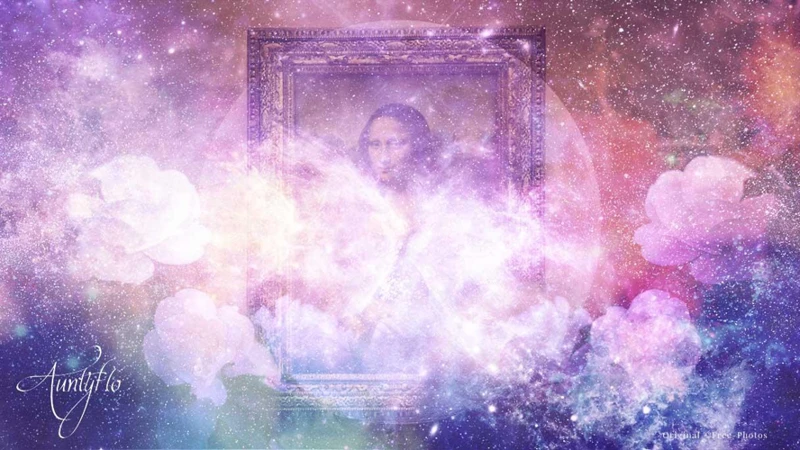Unraveling the Enigma: The Dream of the Fisherman’s Wife Meaning
A captivating and enigmatic piece of art that has fascinated viewers for centuries, “The Dream of the Fisherman’s Wife” is a ukiyo-e print from early 19th-century Japan. Created by the renowned artist Katsushika Hokusai, this artwork continues to stir intrigue with its complex symbolism and interpretation. Depicting a scene of a woman engaging in sexual acts with octopuses, the artwork raises numerous questions about its underlying meaning and cultural context. In this article, we embark on a journey to unravel the mysteries behind this famous artwork, exploring its historical background, symbolism, artistic influences, and lasting impact on the art world. Join us as we delve into the depths of this captivating artwork and uncover the stories it tells.
The Artwork

“The Artwork”
“The Dream of the Fisherman’s Wife” is a mesmerizing example of ukiyo-e print art, a popular genre of Japanese woodblock prints during the Edo period. This particular artwork, created by Katsushika Hokusai around 1814, showcases a vivid and provocative scene. In the foreground, we see a naked woman with entangled limbs and entwined tentacles of two octopuses, engaged in what appears to be a sensual embrace. The composition is highly detailed, capturing the intricate expressions on the faces of the woman and the octopuses, as well as the dynamic movement of their bodies. The use of vibrant colors and intricate line work further enhances the visual impact of the artwork. The combination of the surreal subject matter and Hokusai’s masterful technique makes this artwork truly remarkable and thought-provoking. It challenges traditional notions of sexuality and pushes the boundaries of artistic expression during its time.
1. Historical Background
- Historical Context: “The Dream of the Fisherman’s Wife” was created during the Edo period in Japan, a time of cultural and artistic flourishing.
- Ukiyo-e Prints: The artwork belongs to the genre of ukiyo-e prints, which were popular during this period and depicted scenes from the everyday lives of the common people.
- Shunga Influence: Hokusai was influenced by shunga art, a form of erotic art that flourished in Japan during the same period. This influence can be seen in the explicit nature of “The Dream of the Fisherman’s Wife.”
- Cultural Significance: While Japan was known for its conservative and reserved nature, artworks like this provided an outlet for exploring eroticism and challenging societal norms.
- Artistic Techniques: Hokusai’s use of vibrant colors and intricate line work showcases his mastery of the woodblock printing technique, contributing to the overall impact of the artwork.
2. Description and Composition
- Description: “The Dream of the Fisherman’s Wife” is a visually stunning ukiyo-e print depicting a captivating scene. The artwork showcases a naked woman lying on her back, her face filled with a mix of pleasure and ecstasy. Her arms are entangled with the tentacles of two octopuses, which are caressing her body. The intricate details and facial expressions emphasize the sensuality and intensity of the moment captured in the artwork.
- Composition: The composition of the artwork is skillfully executed, drawing the viewer’s attention to the central figures. The woman and the octopuses are the focal point, positioned in the foreground and occupying the majority of the space. The lines and curves create a sense of movement and fluidity, while the use of colors adds depth and vibrancy to the composition. The juxtaposition of the human figure and the sea creatures creates a visually striking contrast, adding to the intrigue and symbolic nature of the artwork.
Symbols and Interpretation

“Symbols and Interpretation”
“The Dream of the Fisherman’s Wife” is laden with rich symbolism and invites various interpretations. One of the focal points of analysis is the erotic imagery depicted in the artwork. The woman’s intimate encounter with the octopuses represents a fusion of human and animal desires, blurring the boundaries between the natural and the supernatural. This juxtaposition may symbolize the subconscious desires and fantasies of the woman, or it could explore themes of transformation and metamorphosis. Additionally, the octopus itself carries symbolic significance in Japanese culture. Known for its intelligence, flexibility, and adaptability, the octopus is often associated with transformation, mystery, and sensuality. The artwork could also be seen as a manifestation of female power and sexuality, challenging societal norms and expectations. The complex symbolism within “The Dream of the Fisherman’s Wife” allows for a multitude of interpretations, leaving room for personal reflection and analysis.
3. Erotic Imagery
“The Dream of the Fisherman’s Wife” is renowned for its explicit and unabashed portrayal of eroticism. The artwork explores themes of intimacy and desire, challenging societal norms and conventions surrounding sexuality. The depiction of the woman engaged in sexual acts with octopuses is highly provocative and pushes the boundaries of what was considered acceptable. The octopuses, often associated with sensuality and the sea, add an element of fantasy and otherworldliness to the scene. The explicitness of the imagery has incited various reactions throughout history, from fascination to scandal. Critics and scholars have analyzed the artwork from different perspectives, examining the underlying themes of pleasure, liberation, and the taboo. It is important to understand the cultural context of the time in order to fully grasp the intended message and impact of the erotic imagery portrayed in this iconic artwork.
4. Cultural Context
4. Cultural Context
To fully understand the meaning behind “The Dream of the Fisherman’s Wife,” it is crucial to consider the cultural context in which it was created. During the Edo period in Japan, ukiyo-e prints became a popular form of entertainment, primarily among the merchant class. These prints often depicted scenes of everyday life, including landscapes, courtesans, Kabuki actors, and erotica. Sexuality was not considered taboo in Japanese society at the time, and erotic art was widely accepted as a form of artistic expression. The octopus, depicted in the artwork, holds symbolic significance in Japanese culture, representing both fertility and the supernatural. Additionally, the concept of shunga, a genre of explicit Japanese art, further contextualizes the interpretation of this artwork. “The Dream of the Fisherman’s Wife” was created within this cultural milieu, where erotic art was not only accepted but celebrated as an integral part of artistic expression.
5. Feminine Power and Sexuality
“5. Feminine Power and Sexuality”
One of the central themes that emerge from “The Dream of the Fisherman’s Wife” is the portrayal of feminine power and sexuality. The artwork challenges traditional notions of female sexuality by presenting a woman who actively engages in a pleasurable encounter with the octopuses. This depiction subverts societal expectations and norms surrounding women’s roles and desires. The woman’s agency and control over her own pleasure can be seen as a celebration of female autonomy and sexual liberation. Additionally, the octopuses in the artwork symbolize various elements, including eroticism, fertility, and the untamed forces of nature. The juxtaposition of the woman and the octopuses highlights the inherent power and sensuality of both female and natural forms. Through this exploration of feminine power and sexuality, “The Dream of the Fisherman’s Wife” challenges viewers to reconsider traditional gender roles and societal expectations.
Artistic Influences

“Artistic Influences”
Katsushika Hokusai, the creator of “The Dream of the Fisherman’s Wife,” drew inspiration from some of the prevalent art forms and traditions of his time. One significant influence on Hokusai’s work was the ukiyo-e prints, which depicted scenes of everyday life, entertainments, and landscapes. Hokusai expertly adapted the techniques and styles of these prints, combining them with his unique artistic vision to create captivating compositions. Additionally, Hokusai was also influenced by shunga art, a genre of Japanese erotic art that emerged in the Edo period. Shunga prints often celebrated sexuality in a playful and explicit manner, exploring themes of desire and pleasure. The subversive nature of shunga art likely influenced Hokusai’s daring portrayal of eroticism in “The Dream of the Fisherman’s Wife.” Through these artistic influences, Hokusai crafted a piece that challenged societal norms, pushed artistic boundaries, and left a lasting impact on the art world.
6. Ukiyo-e Prints
Ukiyo-e prints, a popular art form in Japan during the Edo period, played a significant role in shaping the cultural landscape of the time. These prints were primarily produced using woodblock printing techniques, allowing for the mass production and distribution of art to a wider audience. Ukiyo-e prints often depicted scenes from everyday life, including landscapes, historical events, and portraits of Kabuki actors and courtesans. They were known for their vibrant colors, intricate details, and use of perspective. The art form had a strong influence on Hokusai, the artist behind “The Dream of the Fisherman’s Wife,” and many other renowned artists of that era. Ukiyo-e prints were celebrated for their ability to capture fleeting moments and emotions, providing a snapshot of the ukiyo, or “floating world,” which represented the pleasure-seeking and transient nature of life.
7. Shunga Art
Shunga art, a form of Japanese erotic art, played a significant role in influencing “The Dream of the Fisherman’s Wife” and its portrayal of explicit content. Shunga, meaning “spring pictures,” emerged during the Edo period as a popular genre of artwork intended to explore themes of love, desire, and sexuality. These prints often depicted explicit sexual encounters in a humorous and playful manner. Artists, including Hokusai, drew inspiration from the style and subject matter of shunga art, incorporating its boldness and explicitness into their own works. The influence of shunga art on “The Dream of the Fisherman’s Wife” is evident in its depiction of explicit eroticism and its exploration of taboo desires. The incorporation of shunga elements adds another layer of depth to the interpretation and understanding of Hokusai’s artwork, as it aligns with the conventions of the era in which it was created.
Impact and Legacy
“The Impact and Legacy”
“The Dream of the Fisherman’s Wife” has left a lasting impact on the art world, inspiring and influencing various artists across different mediums. Despite its controversial nature, the artwork has come to be recognized as an important contribution to the history of Japanese art. While its initial reception may have been met with mixed reactions, the provocative and daring composition challenged societal norms and sparked discussions on topics such as sexuality, desire, and the role of women in art. This piece has paved the way for artists to explore taboo subjects, pushing the boundaries of artistic expression. Furthermore, “The Dream of the Fisherman’s Wife” has been referenced and replicated in various forms, from contemporary art to popular culture, showcasing its enduring influence. Whether viewed as a symbol of empowerment or as a taboo representation, this artwork continues to captivate audiences and provoke contemplation on the complexities of human desire and the intersection of art and society.
8. Controversy and Criticism
Controversy and Criticism
“The Dream of the Fisherman’s Wife” has not been immune to controversy and criticism throughout its history. The explicit and erotic nature of the artwork has been a subject of debate, with some arguing that it goes beyond the boundaries of acceptable artistic expression. The portrayal of a woman engaged in sexual acts with octopuses has raised questions about objectification and the representation of women in art. Criticism has also stemmed from cultural perspectives, where some view the artwork as a reflection of Japan’s historical fascination with eroticism and the objectification of women. However, others argue that the artwork should be appreciated for its artistic merit and symbolic exploration of desire and fantasy. As with any controversial artwork, interpretations and opinions vary, contributing to ongoing discussions about the boundaries and value of artistic expression.
9. Artistic Influence and References
“Artistic Influence and References”
The daring and provocative nature of “The Dream of the Fisherman’s Wife” has sparked artistic influence and references throughout the years. This artwork has inspired numerous contemporary artists to explore themes of sexuality, desire, and the merging of the human and animal form. Its influence can be seen in various forms of art including paintings, sculptures, and illustrations. Additionally, the symbolic use of the octopus in the artwork has intrigued many creators, leading to its inclusion in modern depictions and interpretations. One notable example is the artist Takashi Murakami, who incorporated elements of Hokusai’s work, including the octopus motif, into his own contemporary art style. The enduring legacy of “The Dream of the Fisherman’s Wife” can be observed in the continued fascination and reinterpretations by artists across different periods and mediums.
Conclusion
Conclusion
In conclusion, “The Dream of the Fisherman’s Wife” remains a captivating artwork that continues to intrigue and provoke discussion. Its complex symbolism and interpretation have sparked debates about the boundaries of eroticism, the representation of femininity, and cultural taboos. Katsushika Hokusai’s bold portrayal challenges societal norms and invites viewers to contemplate the depths of human desire, power, and sexuality. As the artwork’s legacy endures, it serves as a testament to the enduring power of art to explore and challenge societal norms. From its historical context to its artistic influences, “The Dream of the Fisherman’s Wife” is a striking representation of the rich and diverse world of art.
Frequently Asked Questions
1. What is the historical background of “The Dream of the Fisherman’s Wife”?
“The Dream of the Fisherman’s Wife” was created by Katsushika Hokusai, a renowned Japanese artist, during the Edo period in the early 19th century. It is a part of the ukiyo-e genre, which translates to “pictures of the floating world,” and depict scenes from everyday life, entertainment, and literature.
2. What is the composition of the artwork?
The composition of the artwork features a naked woman, believed to be a fisherman’s wife, entangled with two octopuses. The intricate details capture the sensual interaction between the woman and the creatures, while the vibrant colors and dynamic lines create a visually striking image.
3. What is the meaning behind the erotic imagery?
The erotic imagery in “The Dream of the Fisherman’s Wife” reflects the exploration of human sexuality and desire. It is believed to convey themes of pleasure, liberation, and the blurring of boundaries between humans and nature.
4. How does the cultural context influence the interpretation of the artwork?
The artwork is rooted in Japanese culture, particularly the ukiyo-e tradition that celebrated the sensual and ephemeral aspects of life. It reflects the influence of shunga art, which explores erotic themes, and highlights the importance of sexual pleasure and exploration in Japanese society.
5. What does the artwork symbolize in terms of feminine power and sexuality?
“The Dream of the Fisherman’s Wife” is seen as a celebration of feminine power and sexuality. The woman in the artwork is depicted as an active participant, engaging in pleasure on her terms. It challenges traditional gender roles, asserting female agency and desire.
6. How were ukiyo-e prints like “The Dream of the Fisherman’s Wife” influenced by other art forms?
Ukiyo-e prints were influenced by various art forms, particularly by the realism and attention to detail found in Chinese painting and the dramatic storytelling of kabuki theater. These influences can be seen in the composition and expressive nature of ukiyo-e prints like “The Dream of the Fisherman’s Wife.”
7. What is the significance of shunga art in relation to “The Dream of the Fisherman’s Wife”?
Shunga art, which is erotic art in Japanese tradition, had a significant influence on “The Dream of the Fisherman’s Wife.” This genre sought to depict sexual desire and pleasure, challenging societal norms and providing a space for exploring human sexuality and emotions.
8. Has “The Dream of the Fisherman’s Wife” faced controversy?
Yes, the artwork has faced controversy due to its explicit content. It has been subject to censorship and criticism by some who find the explicit depiction of sexuality inappropriate. However, it has also been celebrated for its artistic merit and exploration of human desire.
9. How has “The Dream of the Fisherman’s Wife” influenced other artists?
The artwork has left a lasting impact on the art world, inspiring numerous artists throughout history. It has been referenced and reimagined by modern artists, filmmakers, and writers, reflecting its enduring influence on the exploration of sexuality and artistic expression.
10. What is the overall significance of “The Dream of the Fisherman’s Wife”?
“The Dream of the Fisherman’s Wife” is a significant artwork that challenges societal norms, celebrates female sexuality and power, and explores the complexities of desire. Its rich symbolism, historical context, and artistic techniques continue to make it a subject of fascination and interpretation to this day.







